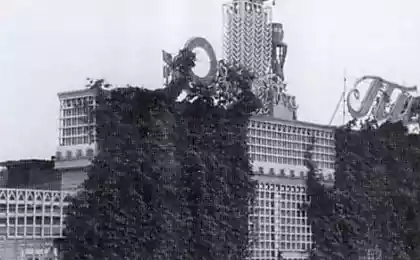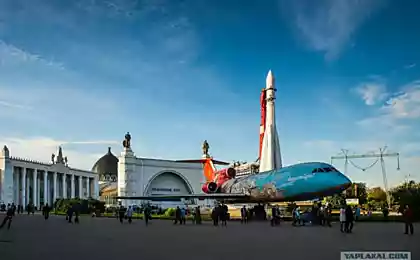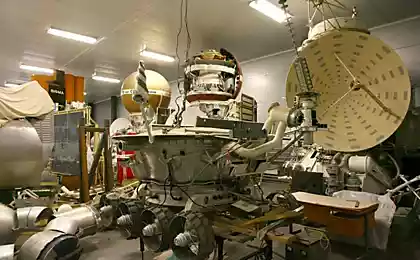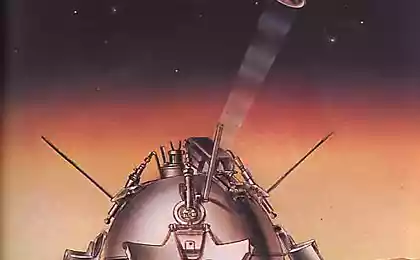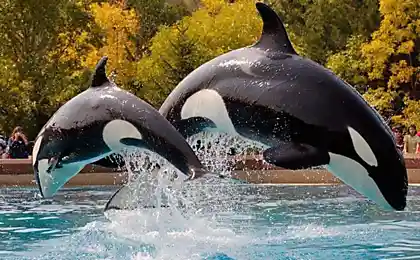826
Today, 70 years VSHV-ENEA-VVC.
The author of the letters: Vladimir Rogoza
13 Picchu.
1) August 1, 1939 under the thunder of orchestras solemnly opened the main exhibition of the Soviet Union - then it was called the All-Union Agricultural Exhibition. The country's leadership wanted to show the world the success of collective farms and show the happy life of the peasants who sought to record harvests converts collective fields. Naturally, it would be more convincing journalists to bring their thriving collective farm village, but they still need to get on the Russian off-road, and before that - and equip them, or at least put in proper form. It turned out that it is easier to establish the elements of a model village directly from Moscow.

2) As usual, the initiative came from the peasants who wanted to acquaint all with their successes and achievements. In 1935, at the next Congress of Collective Farmers such an initiative voiced by a piece of paper, and then the decision formulated a request to the leadership of the country to carry out in 1937 All-Union exhibition, which will showcase "a powerful and great Stalinist campaign for high yield, for better organization of production," etc. .d. etc. Naturally, the forced collectivization and dispossession were not going to show.
3) The exhibition and would open on time, but repression decimated the people who were involved in its organization. It turned out that the enemy is literally invaded the USSR and the People's Commissariat Glavvystavkom, led them himself as Commissar of Agriculture Robert Eiche. Naturally, all were arrested, and many were shot. Who led the construction of the exhibition architect V. Oltarzhevskaya (by the way, won the competition with his project), too, was "the mother of the enemy", to be "ideological wretchedness and insignificance of architectural thought in the design of some of the pavilions." So much of what he had built, was demolished. The opening of the exhibition was moved to 1939.
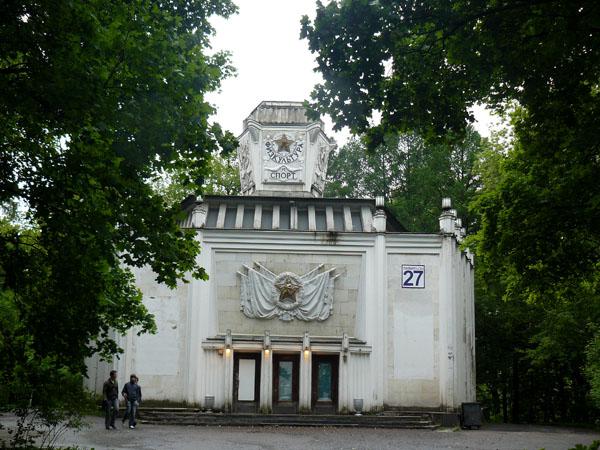
4) In the winter of 1939, the selection of participants. They were to be the innovators selhoztruda and foremost, who achieved the highest achievements. It is worth noting that the achievements and were in fact, people living in rural areas and work could brainy, but not always wanted. To get to the number of exhibitors was prestigious and win some prize - the top of dreams. Diploma of 1st degree in each "nomination" makes 10 thousand. Rubles and a car, Diploma 2nd degree gave 5000 and a motorcycle. Prizes at the time simply outrageous.

5) The exhibition was a huge, colorful and interesting. To the credit of the organizers, and on it were in fact created a festive atmosphere, good conditions for demonstration of achievements and leisure visitors. Remember the famous at the time the film "Pig and shepherd", it has a real footage on the show, though not in '39. Subsequently, some exhibition shots from the film cut, in particular those on which a monument to Stalin was.
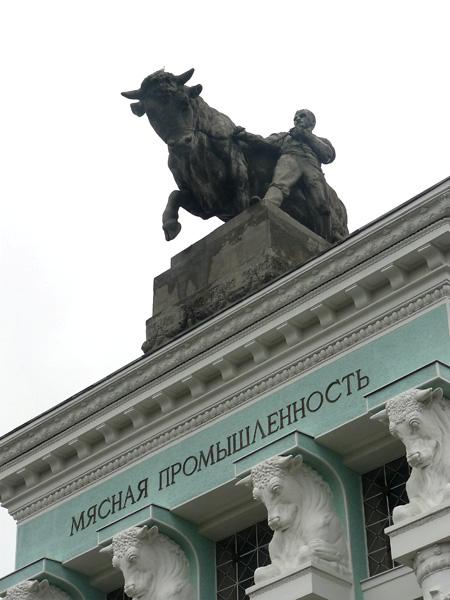
6) Interest in the exhibition was enormous, just three months it was visited by 3, 5 million people. To visitors it easier to get, laid a special trolley line. By the way, do trolleybuses were exotic, as they walked to the VSHV duplex options. At the exhibition and in fact was carried out exchange of experience and demonstrated advanced techniques of farming, lectures by leading scientists of the country, for example, N. Vavilov.

7) Visitors have been something to see. Above the entrance to the famous sculpture Fly "Worker and Collective Farm Girl", on the territory of grandiose pavilions, one even crowned sculpture Chapayeva on horseback (probably the main thing was the presence of the horse). But Stalin did not sit a horse, putting a huge sculpture in the center of the square Mechanization (were exhibited its squares and streets). Besides pavilions at the exhibition were built all sorts of exemplary buildings - kolkhoz, seed barn, MTS, etc. agrolaboratoriya Some of them, however, long been redeveloped, survived.
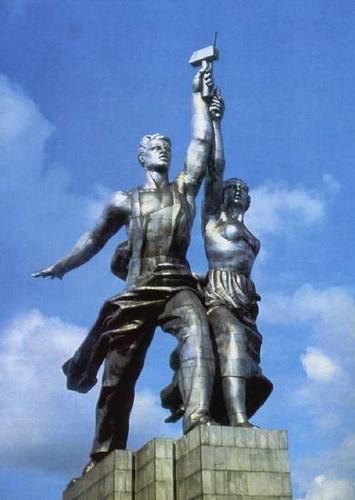
8) Before the war, we had three exhibitions. Last opened at the end of May 1941, it took part in it, and the new republics that emerged in the USSR. It officially closed in a month, was not to demonstrate the achievements, the Great Patriotic War. The decision to resume the exhibition was taken in 1948, but it could only open August 1, 1954. The area of the exhibition was much more pompous, new pavilions, a huge arch of the main entrance, a fountain "Golden sheaf" (later renamed in his "Friendship of Peoples"), on the territory allowed the trolley.

9) In 1956, the territory of the Union Agricultural Exhibition was assigned to conduct the All-Union Industrial Exhibition. A new exhibition has also become constant, and the complex was renamed the Exhibition of Economic Achievements. She had new pavilions, but they were built without the former pomp. In 1964 he opened the famous pavilion "Space", which established the opposite rocket "Vostok" (before this place was a monument to Stalin).

10) In the Soviet era, I loved to go to rest at ENEA, in the pavilions are interesting exhibitions, worked as a cinema and plenty of stereo rides, boat on the pond, the area was well maintained. The only thing that was a problem - it is catering. In restaurants, cafés and kebab were constantly long queues. But the kiosks and stalls with cakes, pastries, ice cream and soda was set. He worked and a large shopping complex, which were brought for sale republics and regions.

11) In the early 90-ies of the old exhibition came to an end. There was a public joint stock company "All-Russia Exhibition Center", the exhibition space in the halls occupied most fair trade, and appeared on the territory of a shopping arcade traders. From recreational exhibition has become a place of trade, and, with a criminal tinge. Actually the exhibition there were only a few large pavilions in which there was no permanent exhibitions, and held occasional exhibitions.

12) Recently, new management at the Exhibition Centre and markedly increased the order, especially in the distribution of outlets. People reached out again to the exhibition not only for shopping, but also to rest. Continued construction of new facilities, has opened the first big hall of the planned eight, whose total area will be more than 240 thousand sq. Meters. And by year's end promise to plant (although to a new location) restored sculpture "Worker and Collective Farm Girl».
Pavilion number 58 & quot; Ukraine & quot;
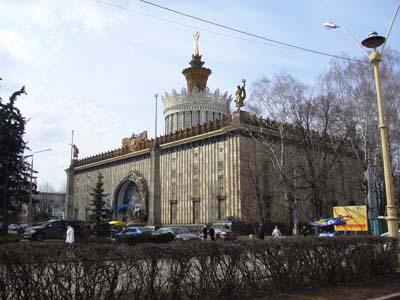
13) In his eighth decade VVC comes renewed, with big plans and no less prospects. We wish that it returned to its former glory and once again become in Moscow one of the favorite holiday destinations.

...
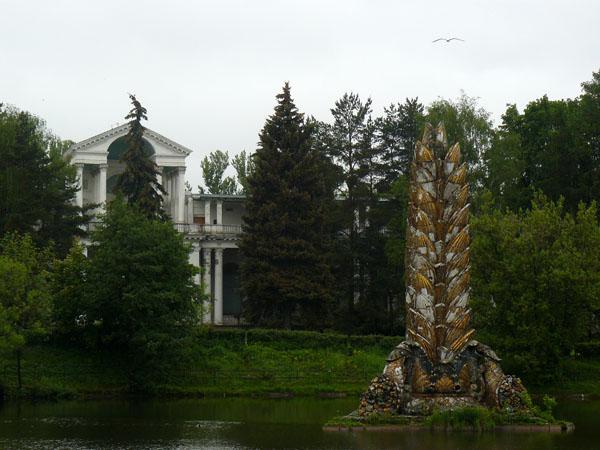
Source:
13 Picchu.
1) August 1, 1939 under the thunder of orchestras solemnly opened the main exhibition of the Soviet Union - then it was called the All-Union Agricultural Exhibition. The country's leadership wanted to show the world the success of collective farms and show the happy life of the peasants who sought to record harvests converts collective fields. Naturally, it would be more convincing journalists to bring their thriving collective farm village, but they still need to get on the Russian off-road, and before that - and equip them, or at least put in proper form. It turned out that it is easier to establish the elements of a model village directly from Moscow.

2) As usual, the initiative came from the peasants who wanted to acquaint all with their successes and achievements. In 1935, at the next Congress of Collective Farmers such an initiative voiced by a piece of paper, and then the decision formulated a request to the leadership of the country to carry out in 1937 All-Union exhibition, which will showcase "a powerful and great Stalinist campaign for high yield, for better organization of production," etc. .d. etc. Naturally, the forced collectivization and dispossession were not going to show.
3) The exhibition and would open on time, but repression decimated the people who were involved in its organization. It turned out that the enemy is literally invaded the USSR and the People's Commissariat Glavvystavkom, led them himself as Commissar of Agriculture Robert Eiche. Naturally, all were arrested, and many were shot. Who led the construction of the exhibition architect V. Oltarzhevskaya (by the way, won the competition with his project), too, was "the mother of the enemy", to be "ideological wretchedness and insignificance of architectural thought in the design of some of the pavilions." So much of what he had built, was demolished. The opening of the exhibition was moved to 1939.

4) In the winter of 1939, the selection of participants. They were to be the innovators selhoztruda and foremost, who achieved the highest achievements. It is worth noting that the achievements and were in fact, people living in rural areas and work could brainy, but not always wanted. To get to the number of exhibitors was prestigious and win some prize - the top of dreams. Diploma of 1st degree in each "nomination" makes 10 thousand. Rubles and a car, Diploma 2nd degree gave 5000 and a motorcycle. Prizes at the time simply outrageous.

5) The exhibition was a huge, colorful and interesting. To the credit of the organizers, and on it were in fact created a festive atmosphere, good conditions for demonstration of achievements and leisure visitors. Remember the famous at the time the film "Pig and shepherd", it has a real footage on the show, though not in '39. Subsequently, some exhibition shots from the film cut, in particular those on which a monument to Stalin was.

6) Interest in the exhibition was enormous, just three months it was visited by 3, 5 million people. To visitors it easier to get, laid a special trolley line. By the way, do trolleybuses were exotic, as they walked to the VSHV duplex options. At the exhibition and in fact was carried out exchange of experience and demonstrated advanced techniques of farming, lectures by leading scientists of the country, for example, N. Vavilov.

7) Visitors have been something to see. Above the entrance to the famous sculpture Fly "Worker and Collective Farm Girl", on the territory of grandiose pavilions, one even crowned sculpture Chapayeva on horseback (probably the main thing was the presence of the horse). But Stalin did not sit a horse, putting a huge sculpture in the center of the square Mechanization (were exhibited its squares and streets). Besides pavilions at the exhibition were built all sorts of exemplary buildings - kolkhoz, seed barn, MTS, etc. agrolaboratoriya Some of them, however, long been redeveloped, survived.

8) Before the war, we had three exhibitions. Last opened at the end of May 1941, it took part in it, and the new republics that emerged in the USSR. It officially closed in a month, was not to demonstrate the achievements, the Great Patriotic War. The decision to resume the exhibition was taken in 1948, but it could only open August 1, 1954. The area of the exhibition was much more pompous, new pavilions, a huge arch of the main entrance, a fountain "Golden sheaf" (later renamed in his "Friendship of Peoples"), on the territory allowed the trolley.

9) In 1956, the territory of the Union Agricultural Exhibition was assigned to conduct the All-Union Industrial Exhibition. A new exhibition has also become constant, and the complex was renamed the Exhibition of Economic Achievements. She had new pavilions, but they were built without the former pomp. In 1964 he opened the famous pavilion "Space", which established the opposite rocket "Vostok" (before this place was a monument to Stalin).

10) In the Soviet era, I loved to go to rest at ENEA, in the pavilions are interesting exhibitions, worked as a cinema and plenty of stereo rides, boat on the pond, the area was well maintained. The only thing that was a problem - it is catering. In restaurants, cafés and kebab were constantly long queues. But the kiosks and stalls with cakes, pastries, ice cream and soda was set. He worked and a large shopping complex, which were brought for sale republics and regions.

11) In the early 90-ies of the old exhibition came to an end. There was a public joint stock company "All-Russia Exhibition Center", the exhibition space in the halls occupied most fair trade, and appeared on the territory of a shopping arcade traders. From recreational exhibition has become a place of trade, and, with a criminal tinge. Actually the exhibition there were only a few large pavilions in which there was no permanent exhibitions, and held occasional exhibitions.

12) Recently, new management at the Exhibition Centre and markedly increased the order, especially in the distribution of outlets. People reached out again to the exhibition not only for shopping, but also to rest. Continued construction of new facilities, has opened the first big hall of the planned eight, whose total area will be more than 240 thousand sq. Meters. And by year's end promise to plant (although to a new location) restored sculpture "Worker and Collective Farm Girl».
Pavilion number 58 & quot; Ukraine & quot;

13) In his eighth decade VVC comes renewed, with big plans and no less prospects. We wish that it returned to its former glory and once again become in Moscow one of the favorite holiday destinations.

...

Source:

